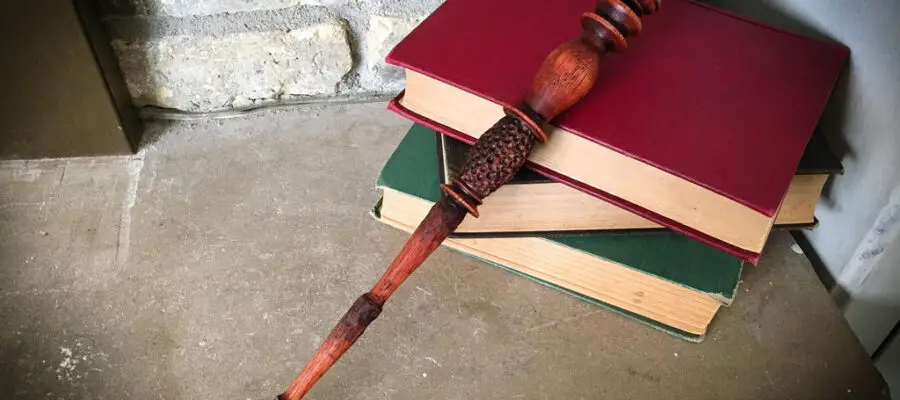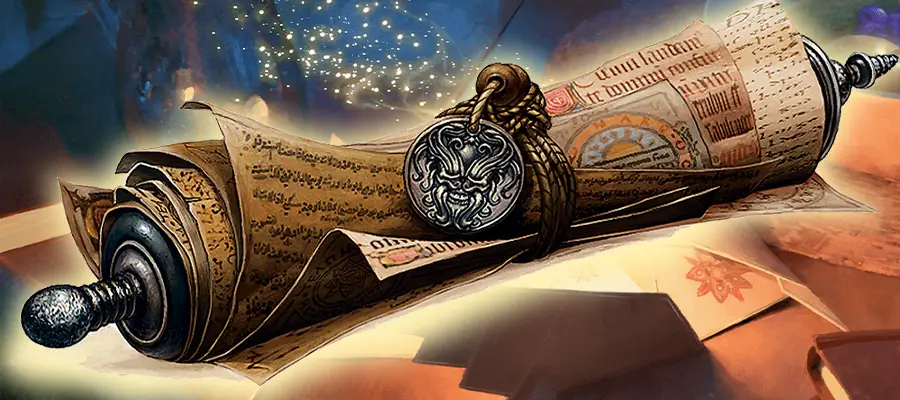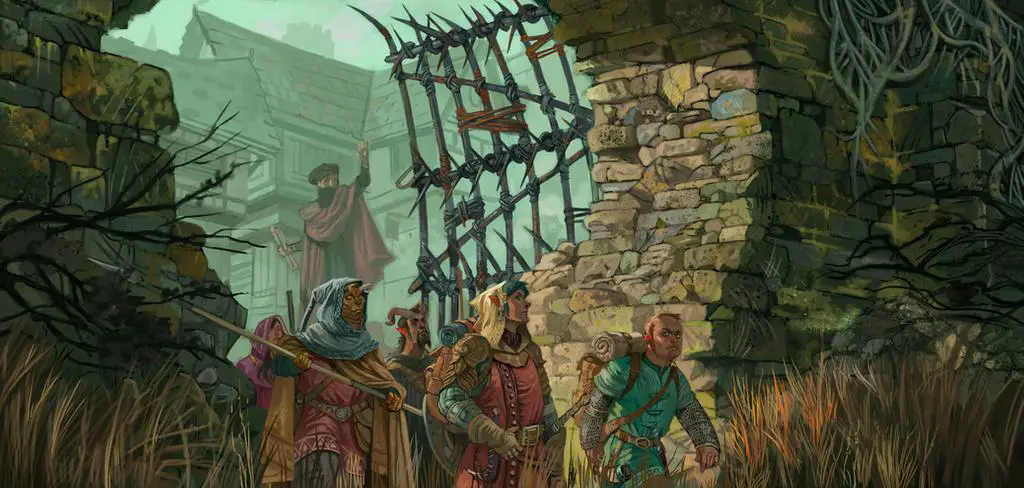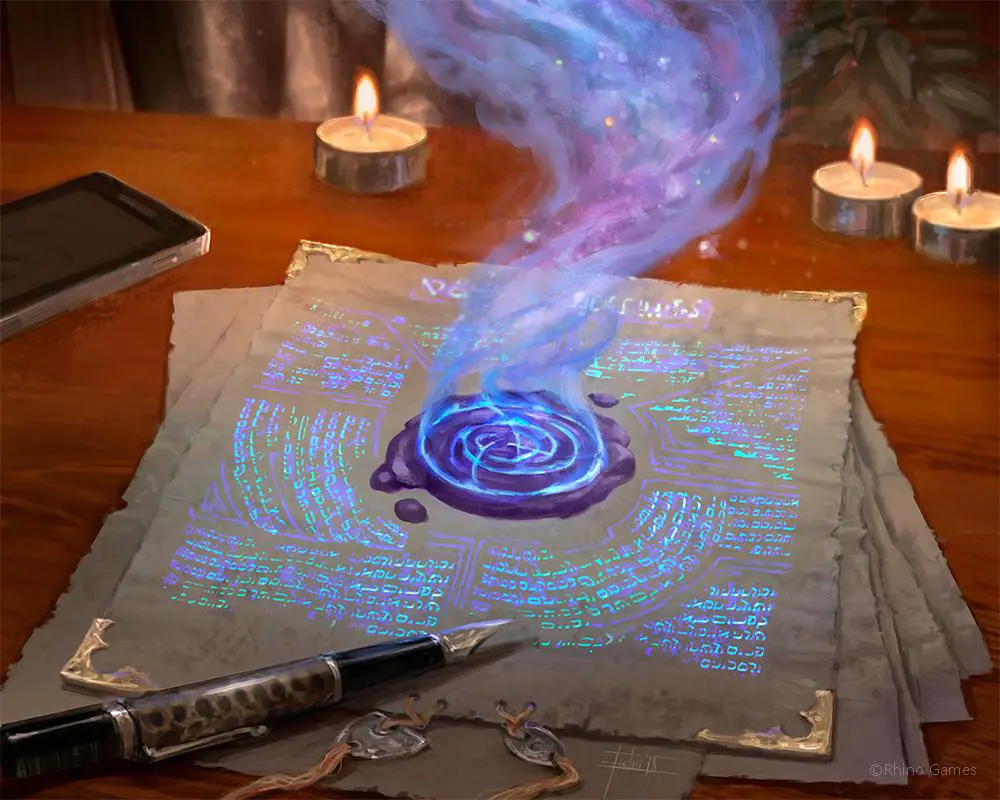D&D 5e wands featured art is “The Wand of Godric Gryffindor” by circathomas05. Creative Commons License.
This article contains affiliate links that add gold to our coffers.
Looking back on my years with D&D 5e, I’m surprised there weren’t more magic wands. A magic wand is an interesting magic item that you can easily deploy into your game without concern for long-term game balance (though some wands are exceedingly powerful).
Due to my increasing love of D&D 5e wands, I’ve summarized everything I know of them. I intend to enable and inspire DMs to put wands in their games and hype players to want wands for their characters. So here is what you’ll find in this article:
What is a magic wand?
How are magic wands used?
Where do magic wands originate?
Can a player character create a magic wand?
Who can use magic wands?
What are the spell attack modifiers or spell save DCs for magic wands?
Can magic wands be used as arcane focuses, druidic focuses, etc. for other spellcasting?
Can Thief Rogues use Fast Hands to activate a magic wand as a bonus action?
Are magic wands always wooden sticks?
Does Counterspell work on magic wands?
Why you should implement magic wands in your game!
What is a magic wand?
The magic items section of the DMG includes many magic wands. These wands often use charges as fuel for casting spells, though some can produce effects that are not achievable by spells.
I greatly appreciate the artwork in the DMG depicting wand aesthetics. Wand designs hint at the magic within. The visual design for a Wand of Paralysis is my favorite (even if it gives me the jibblies), evoking a sense of aberrant tentacles wrapping around a brain to restrict bodily movement as they contract and invade.
How are D&D 5e magic wands used?
Characters may hold a wand to attempt to activate it. Some wands require command words and actions to activate. For example, the Wand of Binding uses actions and reactions.
Wands typically have charges to manage them as a resource. It’s often possible to unintentionally destroy a wand by reducing its charge count to zero and rolling poorly (if the wand’s description dictates a roll).
Where do magic wands originate?
Worldbuilding will affect how common magic wands are and how they are created. I personally like to think they are the former arcane focuses of powerful mages who perished and left a shard of their own arcane power embedded in their now-magic wands.
I’ll expound on how to craft wands and magic items below. If you want more information, you can browse our popular articles about magic item crafting. Opal wrote an extremely useful summary of how magic item crafting works in D&D 5e.
Can a player character create a magic wand?
Magic item crafting rules are in the DMG. They provide a table to guide costs and time investments to craft magic items. These crafting prices can help inform a DM about how much it may cost to purchase a non-consumable magic wand from an arcane peddler. Consider these crafting costs and the markup that a seller would use to turn a profit (likely hundreds of thousands of gold pieces more than the crafting cost):
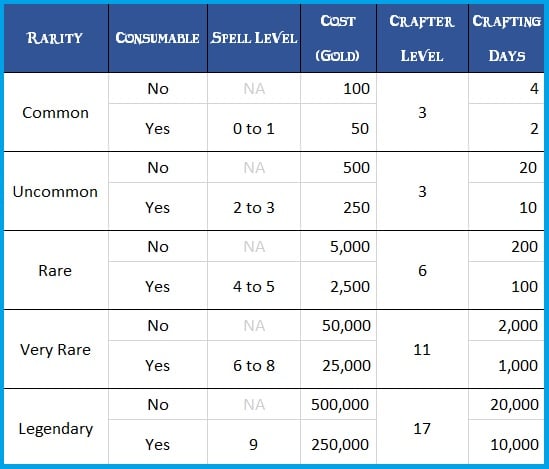
The Replicate Magic Item infusion allows an Artificer to forge magic items from a list provided in TCoE, including the Wand of Magic Detection or the Wand of Secrets. Aside from replicating magic items, Artificers can imitate wands with other infusions and by storing spells.
Who can use magic wands in D&D 5e?
Each magic wand possesses its own requirements for usage. Many mighty wands require attunement.
Some D&D 5e wands specifically require “attunement by a spellcaster.” To clarify what this means, Errata for the DMG describes what spellcaster-required attunement is: “If the prerequisite is to be a spellcaster, a creature qualifies if it can cast at least one spell using its traits or features, not using a magic item or the like.” In other words, if you can cast one spell without the aid of magic items, you can attune to spellcaster-required attunement items.
Notably, wands won’t limit the type of spellcasters attuning to them. You can use wands to cast spells that wouldn’t normally be available to your class, which is crazy!
Thief Rogues gain Use Magic Device at level thirteen to attune to wands that usually require attunement by a spellcaster. Use Magic Device is unique to the Thief, making the subclass incredibly fun (as I expressed in my Rogue subclass ratings, surprising many).
Don’t neglect enemies with wands, either. Parties may roll their eyes at wimpy kobolds until the rascals whip out a wand and cast Cone of Cold.
What are spell attack modifiers or spell save DCs for magic wands?
Magic item descriptions in the DMG determine wand DCs and spell attack modifiers. Similarly, homebrew wands should provide this information. Spell levels and item rarity will be the most helpful factors for determining spell save DCs and spell attack modifiers. The same concept applies if a player crafts a magic wand per the crafting magic items rules in the DMG (which I’ve summarized in the table below).
Can D&D 5e magic wands be used as arcane focuses, druidic focuses, etc. for spellcasting?
Spellcasting focuses are available in various forms, depending on character class. Classes include descriptions of their spellcasting focuses if any. Spellcasting focuses may replace material components that lack a gold cost.
Chapter five of the PHB describes arcane focuses for Sorcerers, Warlocks, and Wizards. Among the other suggestions the book gives for an arcane focus, it describes a specially constructed staff, rod, or wand-like length of wood. If you ask me, a wand sounds a lot like a wand-like length of wood. I rule that wands can be arcane focuses.
Druids and Rangers use druidic focuses for spellcasting. Druidic focuses differ from arcane focuses, but their PHB description similarly mentions that they can be wands or scepters made of yew or special wood. Special wood may compose a wand. I rule that magic wands can be druidic focuses.
Clerics and Paladins would need buy-in from the DM. Holy symbols aren’t inherently compatible with magic wands. However, DMs can enable magic wands to function as holy symbols. Wands can be holy items that emulate a god, virtue, or tenant. It’s mechanically unnecessary since holy symbols are easy to carry or wear, but a player might enjoy the concept.
Artificers use their tools as spellcasting focuses at level one. Their options expand to using items with infusions as spellcasting focuses at level two. Artificers cannot imbue magical items (like wands). Since wands are not tools or imbued mundane items, Artificers cannot use magic wands as spellcasting focuses. The exception would be if a DM allowed a D&D 5e wand to double as a tool.
Bards use musical instruments as spellcasting focuses. I’ve not seen a magic wand that functions as a musical instrument, but a magic wand that also functions as a flute seems reasonable. A DM could definitely make this happen. I’ve seen Bards use flutes as handles for their axes, which seems pretty out there to me. If that idea flies, a magic wand can be a flute.
Can Thief Rogues use Fast Hands to activate a magic wand as a bonus action?
Fast Hands is a useful ability for a Thief. It allows many items to activate as a bonus action instead of an action. Magical items are incompatible with Fast Hands; wands are magic items (like spell scrolls or potions). Thus, Fast Hands won’t mix with wands.
Are D&D 5e magic wands always wooden sticks?
No, this isn’t Harry Potter (as I brace myself for Harry Potter fans possibly informing me that not all wands are wooden in the HP universe). Wands are created of precious metals, bones, otherworldly materials of unknown origin, and anything else you can invent.
You can make wands whatever you want, really. A firearm, whip, or bar of soap could be a magic wand. Flex your creativity as a DM to impress your players as you create interesting magic items that function as wands.
Does Counterspell work on magic wands?
Yes, but I highly recommend checking with your DM. Magic items that allow the user to cast spells will typically function without the usual VSM spell components, so a DM may rule that the spellcasting is imperceptible to Counterspell users. Other DMs would say the wand functions as a pseudo component for spellcasting, making it clear that a spell is being cast. Here’s a Jeremy Crawford tweet that illustrates the point. 100% ask your DM.
Sage Advice 1 and Sage Advice 2 on the subject.
Why you should implement magic wands in your game!
Magic wands can solve spellcasting issues outright. Warlocks who struggle with their scarce spell slots might enjoy magic wands to expand their options. DMs can provide monster loot with magic wands without breaking the game because wands won’t cast any spell the DM isn’t ok with. Pre-Tasha’s Sorcerers can especially benefit from magic wands since they know few spells. Chaotic players playing half-caster martial classes like Paladin or fourth-caster subclasses like Eldritch Knight might be giddy at the chance to unleash Fireballs for a while.
Thief Rogues certainly want to find magic wands to play with when they reach level thirteen (as I mentioned earlier). Aside from that, any spellcaster (someone capable of casting a spell without a magic item to do so) can expand their spell options. This includes expansion into spells that are on spell lists of other classes.
Conclusion
If this article has you feeling pumped to use D&D 5e wands more in your game, cast Message in the comments section below to tell me about it or ask questions! I’ll gladly update this article if you have a question.
Before you go, thumb through our library of magic item crafting articles, they’re game-changing! If magic item crafting doesn’t sound interesting, we have many other top articles that may interest you. Thanks for reading. Good luck slapping your BBEG around with an arsenal of magic wands while you conserve your spell slots!

